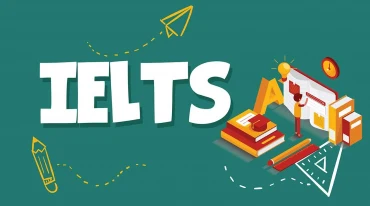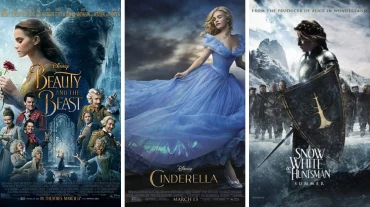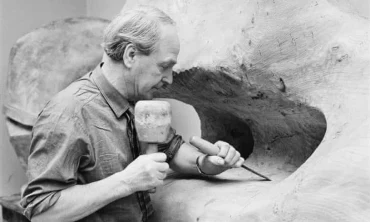
- 357 Lê Hồng Phong, P.2, Q.10, TP.HCM
- Hotline 1: 1900 7060
Hotline 2: (028) 3622 8849
Bài tập IELTS Reading: First Impressions Count - Phân tích từ vựng
First Impressions Count
A Traditionally uniforms were — and for some industries still are — manufactured to protect the worker. When they were first designed, it is also likely that all uniforms made symbolic sense - those for the military, for example, were originally intended to impress and even terrify the enemy; other uniforms denoted a hierarchy - chefs wore white because they worked with flour, but the main chef wore a black hat to show he supervised.
B The last 30 years, however, have seen an increasing emphasis on their role in projecting the image of an organisation and in uniting the workforce into a homogeneous unit — particularly in ‘customer facing’ industries, and especially in financial services and retailing. From uniforms and workwear has emerged ‘corporate clothing’. "The people you employ are your ambassadors," says Peter Griffin, managing director of a major retailer in the UK. "What they say, how they look, and how they behave is terribly important." The result is a new way of looking at corporate workwear. From being a simple means of identifying who is a member of staff, the uniform is emerging as a new channel of marketing communication.
C Truly effective marketing through visual cues such as uniforms is a subtle art, however. Wittingly or unwittingly, how we look sends all sorts of powerful subliminal messages to other people. Dark colours give an aura of authority while lighter pastel shades suggest approachability. Certain dress style creates a sense of conservatism, others a sense of openness to new ideas. Neatness can suggest efficiency but, if it is overdone, it can spill over and indicate an obsession with power. "If the company is selling quality, then it must have quality uniforms. If it is selling style, its uniforms must be stylish. If it wants to appear innovative, everybody can’t look exactly the same. Subliminally we see all these things," says Lynn Elvy, a director of image consultants House of Colour.
D But translating corporate philosophies into the right mix of colour, style, degree of branding and uniformity can be a fraught process. And it is not always successful. According to Company Clothing magazine, there are 1000 companies supplying the workwear and corporate clothing market. Of these, 22 account for 85% of total sales - £380 million in 1994.
E A successful uniform needs to balance two key sets of needs. On the one hand, no uniform will work if staff feel uncomfortable or ugly. Giving the wearers a choice has become a key element in the way corporate clothing is introduced and managed. On the other, it is pointless if the look doesn’t express the business’s marketing strategy. The greatest challenge in this respect is time. When it comes to human perceptions, first impressions count. Customers will size up the way staff look in just a few seconds, and that few seconds will colour their attitudes from then on. Those few seconds can be so important that big companies are prepared to invest years, and millions of pounds, getting them right.
F In addition, some uniform companies also offer rental services. "There will be an increasing specialisation in the marketplace," predicts Mr Blyth, Customer Services Manager of a large UK bank. The past two or three years have seen consolidation. Increasingly, the big suppliers are becoming ‘managing agents’, which means they offer a total service to put together the whole complex operation of a company’s corporate clothing package - which includes reliable sourcing, managing the inventory, budget control and distribution to either central locations or to each staff member individually. Huge investments have been made in new systems, information technology and amassing quality assurance accreditations.
G Corporate clothing does have potentials for further growth. Some banks have yet to introduce a full corporate look; police forces are researching a completely new look for the 21st century. And many employees now welcome a company wardrobe. A recent survey of staff found that 90 per cent welcomed having clothing which reflected the corporate identity.
Questions 1-6
The passage has seven paragraphs A-G. Which paragraphs discuss the following points? Write the appropriate letters A-G in boxes 1-6 on your answer sheet.
1. Different types of purchasing agreement ____
2. The original purposes of uniforms ____
3. The popularity rating of staff uniforms ____
4. Involving employees in the selection of a uniform ____
5. The changing significance of company uniforms ____
6. Perceptions of different types of dress ____
ANSWER KEY
1. F
2. A
3. G
4. E
5. B
6. C
TỪ VỰNG TRONG BÀI
Subtle art: nghệ thuật tinh tế
Wittingly or unwittingly: Dù vô tình hay cố ý
Subliminal /ˌsʌbˈlɪm.ən.əl/ (adj): thuộc tiềm thức (not recognized or understood by the conscious mind, but still having an influence on it)
Consolidation /kənˌsɑː.ləˈdeɪ.ʃən/ (n): sự hợp nhất (the process in which businesses join together to make a single organization)
Amass /əˈmæs/ (v): tích lũy (to get a large amount of something, especially money or information, by collecting it over a long period)
THƯ VIỆN LIÊN QUAN

Reading là một trong bốn phần thi bắt buộc của bài thi IELTS, đây cũng được xem là phần thi thử thách nhất để chinh phục được band điểm cao. Hãy...

Bài viết cung cấp cho đọc giả Bài tập Reading part 3 - Chủ đề: Why fairy tales are really scary tales - Có đáp án

Bài viết cung cấp cho đọc giả Bài tập Reading part 2 - Chủ đề: The Desolenator: producing clean water - Có đáp án

Bài viết cung cấp cho đọc giả Bài tập Reading part 1 - Chủ đề: Henry Moore (1898-1986) - Có đáp án
Hoặc gọi ngay cho chúng tôi:
1900 7060
 | Chính sách bảo mật thông tin | Hình thức thanh toán | Quy định chung
| Chính sách bảo mật thông tin | Hình thức thanh toán | Quy định chung
Giấy chứng nhận đăng ký doanh nghiệp số 0310635296 do Sở Kế hoạch và Đầu tư TPHCM cấp.
Giấy Phép hoạt động trung tâm ngoại ngữ số 3068/QĐ-GDĐT-TC do Sở Giáo Dục và Đào Tạo TPHCM cấp